News
University field course
1 March 2019
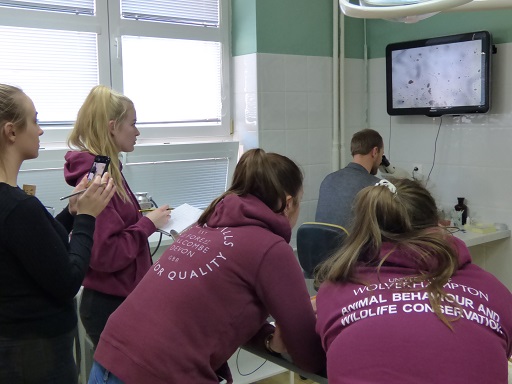
We organised and hosted our eighth annual field course for students of Animal Behaviour and Wildlife Conservation at the University of Wolverhampton from 23 February to 1 March 2019. Through a combination of practical work outdoors and in the laboratory as well as presentations and projects, students learned about large carnivore research, monitoring and conservation in Slovakia. Slovak Wildlife Society team members Robin Rigg, Peter Bedo, Martin Peleš and Jörn Kaufhold taught the basics of wildlife tracking, use of GPS, GIS and camera traps as well as data recording, sample collection and analysis. Our thanks go to Miroslav Priechodský of Lesy SR for presenting a hunting manager's view of large carnivores as well as to Zuzana Ševčíková, Viera Revajová, Peter Major and Ladislav Molnar at The University of Veterinary Medicine and Pharmacy in Košice for giving the students the opportunity to learn about diet analysis and parasitology.
Wolf hunting quota in 2018/2019
30 October 2018On 25.10.2018 the Working Group for setting the wolf hunting quota and conditions in Slovakia held its annual meeting. The Ministry of Agriculture and Rural Development subsequently set a quota of 70 wolves for the 2018/2019 hunting season.
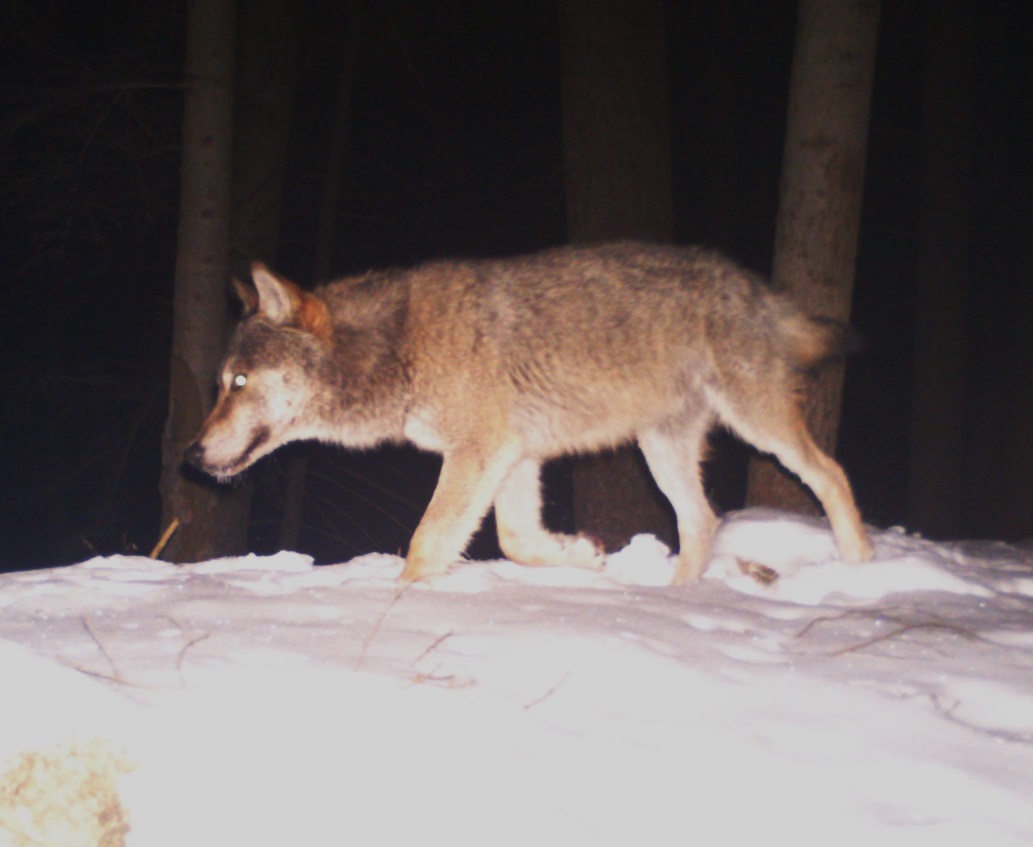 The role of members of the Working Group is to submit materials for negotiation according to the Programme of Care of the Grey Wolf in Slovakia, which was approved by the Ministry of the Environment in 2016. As the general director of the Section of Forestry and Wood Processing appointed Slovak Wildlife Society chairman Robin Rigg as a member of the working group, we had the chance to take part in the discussions and present results of monitoring wolves during the period 2010–2018. More >>
The role of members of the Working Group is to submit materials for negotiation according to the Programme of Care of the Grey Wolf in Slovakia, which was approved by the Ministry of the Environment in 2016. As the general director of the Section of Forestry and Wood Processing appointed Slovak Wildlife Society chairman Robin Rigg as a member of the working group, we had the chance to take part in the discussions and present results of monitoring wolves during the period 2010–2018. More >>
University field course
23 March 2018
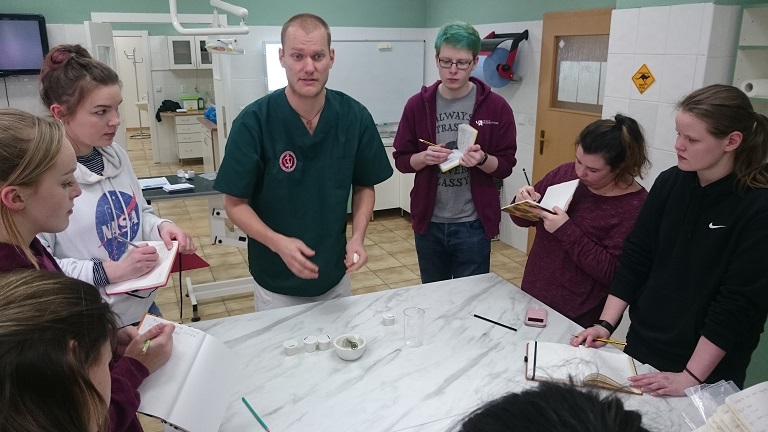
We organised and hosted a seventh annual field course for students of Animal Behaviour and Wildlife Conservation at the University of Wolverhampton from 17 to 23 February 2018. Through a combination of practical work outdoors and in the laboratory as well as presentations and projects, students learned about large carnivore research, monitoring and conservation in Slovakia. Slovak Wildlife Society team members Robin Rigg, Peter Bedo and Ján Barilla taught the basics of wildlife tracking, use of GPS, GIS and camera traps as well as data recording, sample collection and analyses of diet, parasites and DNA. Our thanks also go to Peter Major and Ladislav Molnar for their assistance at The University of Veterinary Medicine and Pharmacy in Košice.
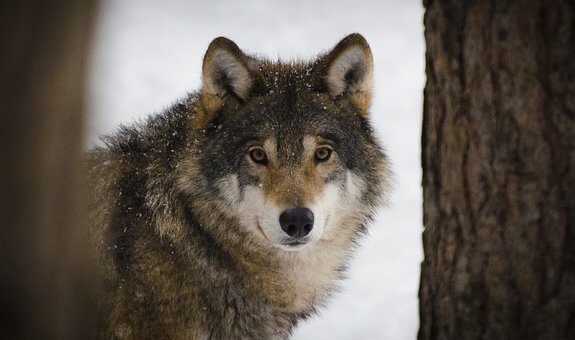
Wolves of northern Slovakia
4 December 2017We invite you to the Ekotopfilm - Envirofilm festival in Spišska Nova Ves on 4 December at 18:00, where you can get to know how the wolf population in Slovakia is doing. Robin Rigg, zoologist and founder of the Slovak Wildlife Society, will be a guest. Since coming to Slovakia from Scotland in 1996 his work has focused on wolves, bears and lynx and their interactions with local people. In the lecture he will share the latest results of monitoring wolves obtained from genetic analysis, which offers a unique insight into their population. What influence does hunting have on numbers and dynamics of packs? What significance does this have for their conservation and management? Come and join us and feel free to ask questions!
Special container passed all tests
26 September 2017In colaboration with manufacturer Meva-SK and Košice Zoo we have tested a refuse container, or rather its resistance to bears. It is a standard 1100-litre container, modified by the manufacturer. Three-times thicker metal plating was used, it was fitted with a two-part locking system and the ruuber gasket was replaced with a reinforced metal strip, which prevents the container being opened. As attractants we used melon, fish, cake, honey, peanut butter and raspberry essence, which could be smelled all around the container and tickled the taste buds of bears. Žabo, a 370-kilogram male, had an hour to try to get to these goodies. The container held firm. 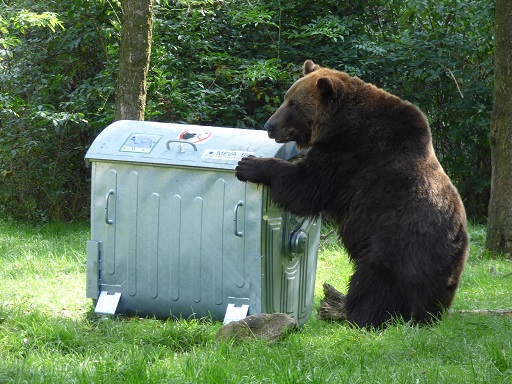 The modified container was already tested directly in the field with bears in the Tatra Mountains using camera traps. There was also another test for mechanical damage during simulated normal usage and emptying into the collection vehicle. All three tests were successful and the bear-resistant container can now go into production. Thank you to director Mr. Kočner and all employees at the zoo for their willingness to help!
The modified container was already tested directly in the field with bears in the Tatra Mountains using camera traps. There was also another test for mechanical damage during simulated normal usage and emptying into the collection vehicle. All three tests were successful and the bear-resistant container can now go into production. Thank you to director Mr. Kočner and all employees at the zoo for their willingness to help!

Appeal to Give Wolves a Future!
23 August 2017We have launched a crowdfunding appeal Give Wolves a Future! to help raise the $20,000 needed to complete a groundbreaking genetic study on wolves in Slovakia. Wolf hunting is legal in Slovakia, and every year up to 150 wolves are killed. The impact this has on wolves living in the heart of Europe is largely unknown because of a lack of research and monitoring. Our pioneering genetic study, conducted in cooperation with leading experts at the Univeristy of Ljubljana and supported by the Wolves and Humans Foundation, will provide unprecedented insights into the effects of hunting on wolf family life. Please donate to the appeal at Generosity by Indiegogo. Generosity has no fees so your donation can make the greatest impact.
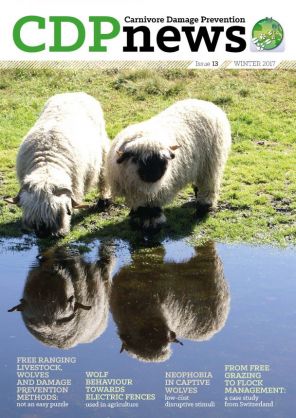
Carnivore Damage Prevention News
6 July 2017Issue 13 of Carnivore Damage Prevention News is now available online. The articles in this issue illustrate the complexity of implementing livestock protection measures and the need to address the social and cultural aspects of conflicts as well as developing technical solutions such as electric fences and livestock guarding dogs.
Wilderness Environmental Field Trip
20 March 2017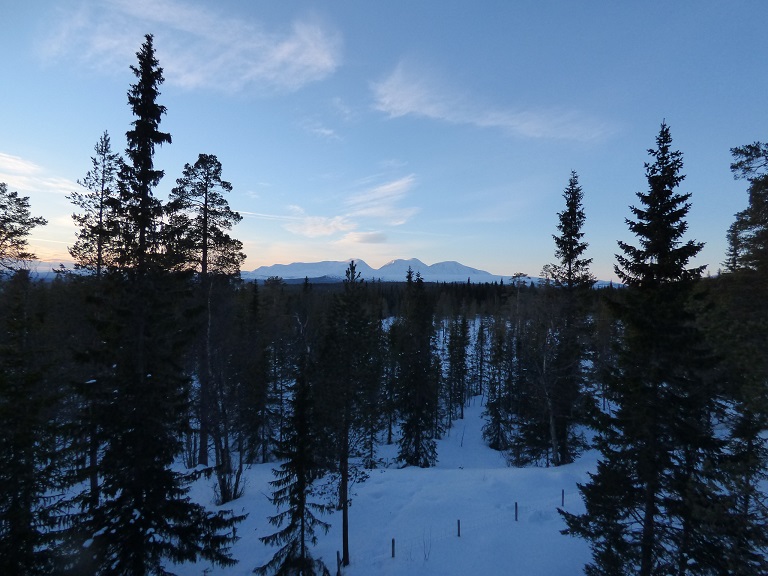
Thanks to the Norway-Slovakia Bilateral Fund we took part in a Wilderness Environmental Field Trip in Hedmark County, Norway, from 6 to 10 March organized by Soloer vgs. Soensterud. Together with students and teachers from the school we spent time outdoors near Trysil, tried dog sledding, viewed the wonderful educational displays at the forest museum in Elverum and exchanged experience of monitoring wildlife, especially wolves and lynx. Participants also discussed the potential impacts of climate change on the behaviour of large carnivores such as bears and learned about safe and environmentally friendly recreation in wildlands. A weekend in Oslo after the field trip gave us the chance to learn more about Norwegian adventurers of the past at the amazing Fram, Kon-Tiki and Viking Ship museums.
University field course
5 March 2017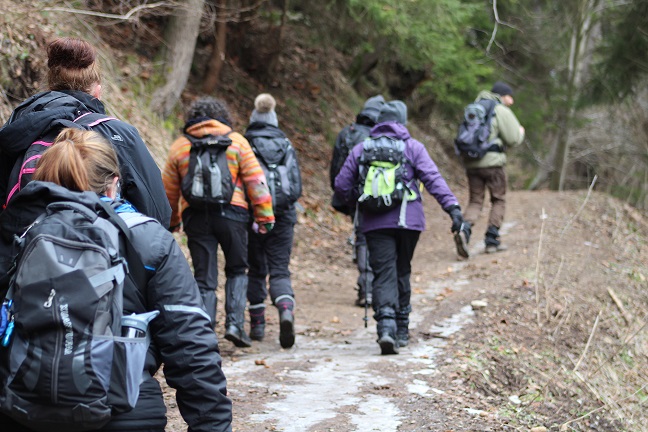
We organised and hosted a sixth annual field course for students of Animal Behaviour and Wildlife Conservation at the University of Wolverhampton from 25 February to 3 March 2017. Through a combination of practical work outdoors and in the laboratory as well as presentations and projects, students learned about large carnivore research, monitoring and conservation in Slovakia. Slovak Wildlife Society team members Robin Rigg, Sam Puls, Peter Bedo, Joern Kaufhold and Ján Barilla taught the basics of wildlife tracking, use of GPS, GIS and camera traps as well as data recording, sample collection and analyses of diet, parasites and DNA. Students learned about game and forestry management in the Low Tatras from Miroslav Priechodský at the regional forestry office. Our thanks also go to Peter Major and Ladislav Molnar for their assistance at The University of Veterinary Medicine and Pharmacy in Košice.
Programmes of Care for the bear and lynx
3 March 2017On 2 February 2017 the Ministry of the Environment of the Slovak Republic approved a Programme of Care for the Brown Bear (Ursus arctos) in Slovakia ("Program starostlivosti o medveďa hnedého na Slovensku") and a Programme of Care for the Eurasian Lynx (Lynx lynx) in Slovakia ("Program starostlivosti o rysa ostrovida na Slovensku"). These documents are available (in Slovak) on the website of the Ministry.
Wolf and lynx monitoring
7 February 2017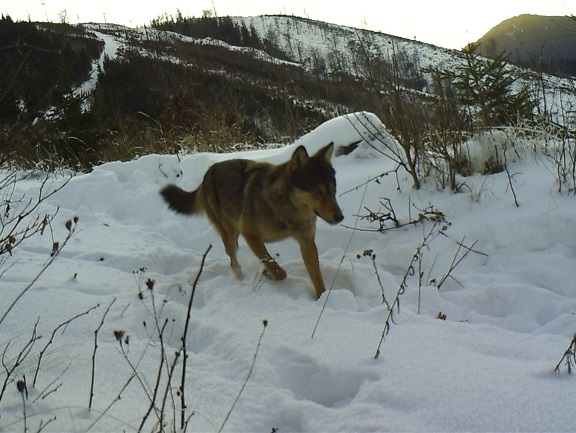
Thanks to the enthusiastic help of a fantastic group of volunteers together with project staff, foresters, national park zoologists and rangers, in just 3 weeks we collected a record 142 samples for genetic monitoring of wolves in the Liptov region of Slovakia. We also set up camera traps and succeeded to obtain photographic and video footage of several different wolf packs in our study area along with many other species including lynx and wildcat. Lucky volunteers got to see wild wolves as well as brown bears, which were also active this winter despite freezing temperatures. If you are interesting in joining the project as a volunteer, we are now taking bookings for 2018. The last 3 years each sold out, so sign up early to avoid disappointment!
Programme of Care for the Wolf
16 August 2016The Ministry of the Environment of the Slovak Republic has approved a Programme of Care for the Grey Wolf (Canis lupus) in Slovakia ("Program starostlivosti o vlka dravého na Slovensku"), which you can find (in Slovak) on the website of the Ministry.
An event with carnivores in the Low Tatras
29 August 2015
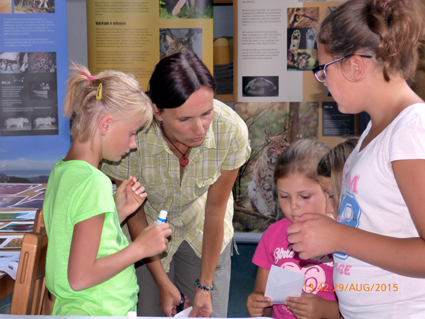
At the end of the summer season in cooperation with Hotel Ski and ZOO kontakt we organized an event full of fun, great atmosphere and unique information about carnivores - especially lynx. The first part of the event was aimed at a younger audience, with an arctic fox, a beech marten and a South American coati brought from ZOO kontakt. Since they were accustomed to people, children had the opportunity to touch and play with these animals. Participants of a workshop under the direction of Svetlana Betková of SWS drew footprints of wild animals, tried a knowledge test and learned many interesting things about large carnivores. Our exhibition Lynx and their relatives throughout the world was on display in Hotel Ski. An evening session with a discussion on carnivores in Slovak nature took place for adults. Tomáš Vatycha introduced the idea, implementation and future of the ZOO kontakt project. Michal Haring gave a presentation called White Wilderness - a project aimed at tracking lynx and wolves in winter. In the third presentation Robin Rigg showed work with camera traps and results from the project Coexistence with Carpathian Spirits focused on lynx.
A weekend with wild cats
2 and 3 August 2014
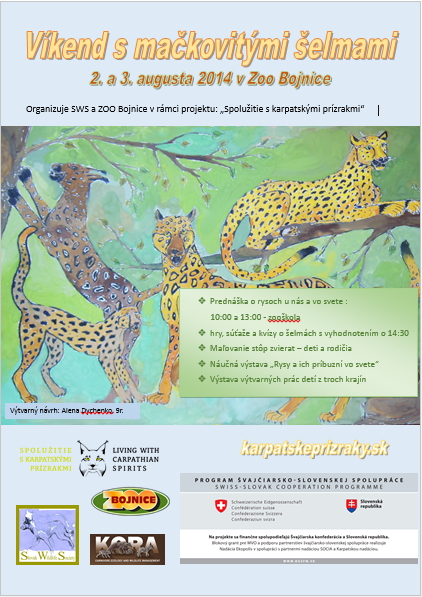
EU Large Carnivore launch
10 June 2014
Today was the launch and first meeting of the EU Platform on Coexistence between People and Large Carnivores.
Tracking event - certification
29-30 August 2013
![]()
During these two days we had the chance to become certified wildlife trackers. Two expert assessors, Cybertracker network members David Moskowitz and his colleague Casey McFarland, came to test us and evaluate our knowledge, experience and skills in the field. These true masters were able, in a short period of time and in unfamiliar territory, to identify many tracks and signs of the presence of animals. The task of the nine participants was to identify the animals that left them and sometimes also to describe their activity in detail. They asked us about signs that many people would not even notice: subtle scratches in tree bark, an old depression in mud, excavated earth, the exact number of footprints or identifying which of the animal's feet made them. The biggest mystery for us were perhaps the droppings of a toad, which we saw for the first time. It was a real challenge for us all and an unforgettable experience. We thank David and Casey for sharing their rich experience and for the chance to be reminded once again that sometimes we need to stop and look carefully around us, so that we might understand at least a little of the life of animals.
International seminar on lynx
19 July 2013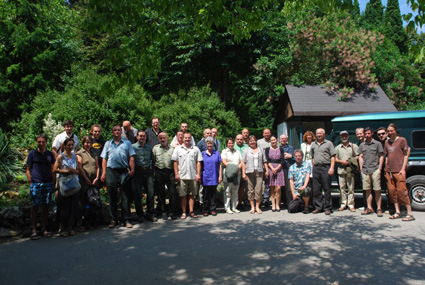
Experts dealing with research and conservation of the lynx in Slovakia gathered together at Bojnice Zoo School for an international seminar on 19 July. Dr. Urs Breitenmoser and Dr. Christine Breitenmoser-Würsten from Swiss organisation KORA as well as of the IUCN Cat Specialist Group were our esteemed hosts. In their presentations they repeatedly emphasised the importance of detailed research on the population in Slovakia as the source in the past for the reintroduction of several lynx populations in Europe. We learned about the history and current status of the lynx in Europe as well as the system and results of monitoring and genetic research in Switzerland. Participants were shown in detail how we will conduct research on lynx during the project Living with Carpathian Spirits: using camera traps and capture-mark-recapture techniques to identify individuals and determine abundance with statistics. Jakub Kubala of Zvolen Technical University and at the present time also an employee of Bojnice Zoo and SWS presented the aims of the project in the Štiavnické Mountains and Veľká Fatra National Park. The seminar was financed through the Swiss-Slovak Cooperation Programme. Among the 36 participants besides locals and guests from Switzerland were also colleagues from the Czech Republic. More >>
Carpathian lynx project team meets
19-21 April 2013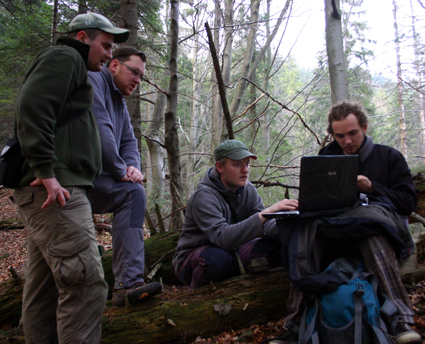
In preparation for the launch of our new project, Living with Carpathian Spirits, we hosted a 2-day team-building event in Liptovský Hrádok. Branislav Tám of Bojnice Zoo welcomed everyone to the meeting, following which project leader Jakub Kubala explained the history and current situation of the Eurasian lynx and the aims and methodology of our project. We were joined by several key people who will be assisting with fieldwork, including staff of Veľká Fatra National Park. We also took the opportunity to check two camera traps that we had left out since early February. The first one was a disappointment, with no new images, but the second had recorded a lynx passing by just four hours after it was set up, and subsequently also photographed a badger and a yearling red deer.
SWS on Facebook
15 April 2013
 The Slovak Wildlife Society has a new Facebook page where you can keep up with the latest news, research results, photographs and videos.
The Slovak Wildlife Society has a new Facebook page where you can keep up with the latest news, research results, photographs and videos.
Grant award for Carpathian lynx project
20 March 2013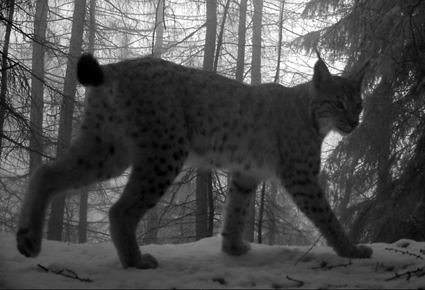
Very exciting news: we have been awarded a grant of €150,000 from the Swiss-Slovak Cooperation Programme for our project Living with Carpathian Spirits. The aim of the project is the conservation of lynx populations in Slovakia and Switzerland through scientific monitoring, applied research and environmental awareness raising in the context of practical protection and reintroduction management. We will be implementing the project in partnership with KORA, whose members are world-renowned experts on large carnivores, particularly felids, and Bojnice Zoo, which has a rich history of lynx research and rehabilitation.
Elk in northern Slovakia
28 February 2013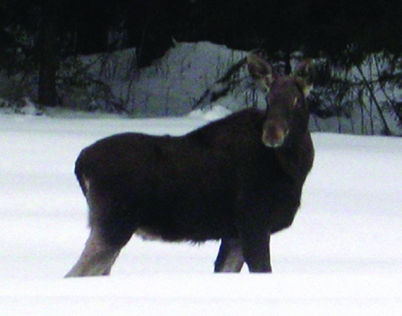
According to forester Stanislav Bystrianský, a female Eurasian elk (Alces alces) has been photographed by a hunter in the Liptov region of northern Slovakia. Elk, which are very similar to North American moose, are the largest living members of the deer family, but unlike most other deer species they are usually solitary animals and do not form herds. Elk are native to Slovakia but were eradicated here around 300 years ago and were severely depleted in much of the rest of Europe due to hunting and habitat loss. Since then the species has recovered strongly in Scandinavia but is still scarce in the Carpathians. This one might have come from Poland, where there are around 3,000 individuals. Elk tend to prefer damp, marshy habitats close to water but can be found in a range of woodlands including previously logged sites and even open farmland if there is forest nearby.
Wolf hunting controversy
18 December 2012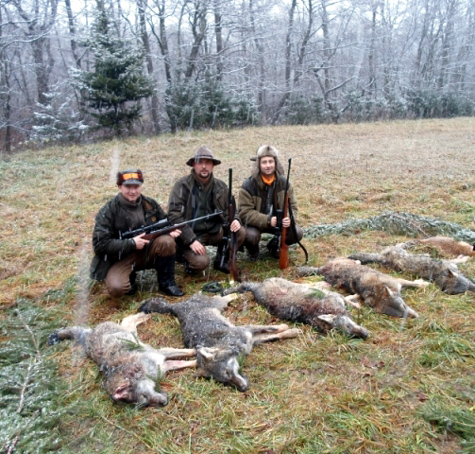
Environmentalists in Slovakia, Poland and the Czech Republic are protesting on social media websites and petitioning the EU about the killing of wolves in Slovakia and the Polish government have written to their Slovak counterparts requesting a halt to hunting within 23 km of the border. Slovakia's Ministry of Agriculture and Rural Development approved a quota of 130 wolves for the current hunting season, which runs from 1 November 2012 to 15 January 2013. This is a change compared to the previous three years, when hunters were given from 1 October to 31 January to fill quotas of between 120 and 150 wolves, even though legislation on nature and landscape protection lists the wolf as a protected species from 16 January to 31 October. Despite the shorter time limit, hunters seem to be rapidly filling this year's quota. In 2011/12 this happened seven weeks before the close of the hunting season when the quota of 120 was apparently exceeded by 15% (21% when including other causes of death, such as vehicle collisions); hunters argue this shows there must be lots of wolves. During our Slovakia Wolf Census Project in 2005-2007 we found that 40% of the approximately 50 wolf packs in Slovakia are shared with neighbouring countries, especially Poland. In some cases wolves which raise pups during the summer in Poland, where they are fully protected by law, are shot when they cross into Slovakia. We therefore emphasise the need for reliable methods of monitoring and research to improve knowledge of population status and the effects of hunting as well as greater communication and cooperation between countries sharing the same population to coordinate management.
Bears and lynx in Slovenia and Slovakia
12 December 2012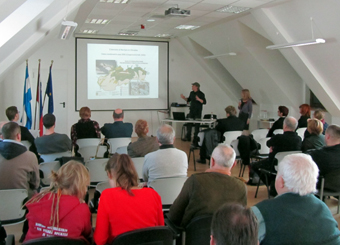
We took part in the international conference European Capital of Brown Bears in the Rokodelski Center, Ribnica, Slovenia. The conference dealt with the issue of coexistence and interactions, or conflicts, between bears and people in Slovenia and Europe with the participation of several interest groups (landowners, hunters, foresters, ecologists, etc.). Within the conference the issue of lynx management was also discussed. SWS prepared two presentations for the conference: "The brown bear in the modern world" and "Conservation management of autochthonous and reintroduced populations of Eurasian lynx Lynx lynx in Europe". Following the conference SWS consulted and discussed with experts from The Biotechnical Faculty of the University of Ljubljana, where the next steps for cooperation in the coming years were agreed.
SWS joins the Large Carnivore Initiative for Europe
11 December 2012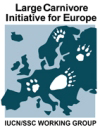
SWS founder and chairman, Robin Rigg, has been invited to join the Large Carnivore Initiative for Europe (LCIE). This group of experts from across Europe, chaired by world-renowned wolf expert professor Luigi Boitani, strives to play a role in the wise management of large carnivores throughout the continent. The LCIE's many significant achievements so far include the elaboration and approval by the Bern Convention Standing Committee of Action Plans for five carnivore species, a GIS analysis of "Conservation areas for large carnivores in the Carpathians", Online Information Systems and organising a series of workshops in 15 countries, including Slovakia,  to elaborate "Guidelines for population level management plans for large carnivores", which were finalised at a pan-European conference and endorsed as best practice by the European Commission. Since 2010 the LCIE has been a Specialist Group within the Species Survival Commission (SSC) of the International Union for Conservation of Nature (IUCN): a science-based network of more than 7,500 volunteer experts from almost every country of the world.
to elaborate "Guidelines for population level management plans for large carnivores", which were finalised at a pan-European conference and endorsed as best practice by the European Commission. Since 2010 the LCIE has been a Specialist Group within the Species Survival Commission (SSC) of the International Union for Conservation of Nature (IUCN): a science-based network of more than 7,500 volunteer experts from almost every country of the world.
White Wilderness 2013 fully booked!
10 December 2012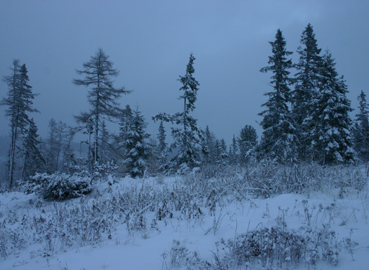
Despite the continuing recession hitting people's pockets, we are delighted and grateful to announce that places for volunteers on our ongoing project White Wilderness: Carpathian Wolf Watch are filled for this winter and we even have a waiting list. Without government, EU or other major funding to support the work, the project relies on participants' contributions to carry out fieldwork. Nevertheless we would like the experience to be accessible to anyone and so offer substantial discounts to those in need including charity workers, students and, most of all, local people. For anyone who would like to take part but missed out this year, dates for 2014 have already been set and you are welcome to sign up early to avoid disappointment. We are grateful to Apex Radio Systems, the UK's leading two-way radio and communications provider, for once again loaning us equipment - thanks Richard! - and to Working Abroad for helping us recruit international volunteers - thanks Vicky! Snow arrived last week so we are now gearing up ready to get started next month.
Reporting to the EU and the Council of Europe
15 November 2012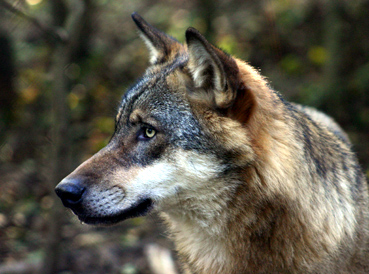
The EU Commission has asked the Large Carnivore Initiative for Europe (LCIE) to prepare reports for all carnivore species in all countries. We were asked by the LCIE to contribute to their report on wolves in Slovakia. The wolf occurs in approximately 40% of the country, being widespread in upland areas of northern, central and eastern Slovakia. The official national estimate of wolf numbers (2,065 individuals in 2011) is generated by summing together local estimates provided by hunting ground users. This methodology is doubtful because it does not take into account the established fact that a wolf home range is typically 80-200 km2 and overlaps several hunting grounds, resulting in the same wolves being counted several times. Our current wolf tracking project is using genetic analysis to help overcome this problem. Results from four different quantitative methods indicate that official estimates of wolf numbers have tended to be at least 5 times too high, a more realistic estimate being between 200 and 400 wolves, depending on season. Slovakia has derogations from the EU Habitats Directive and the Bern Convention which allow hunting, but it is obliged to show that it is maintaining the population at a favourable conservation status. In 2007 the Ministry of the Environment reported 252-410 wolves in Slovakia and in May 2012 the State Nature Conservancy informed the Bern Convention's Group of Experts on large carnivores that numbers "do not exceed 500 individuals, the population is stable". Until 2009 there was no limit on how many wolves could be legally shot during the open hunting season. Since 2009/10, the Ministry of Agriculture has been setting quotas. This ought to be a positive step but the process of establishing them needs to be more transparent and based on objective, accurate scientific data. Slovakia also still lacks a national management plan for the wolf which should be prepared with the participation of all key interest groups and include, amongst other things, a clear goal for the size of the population.
Reducing the negative effects of transport on wildlife
21-24 October 2012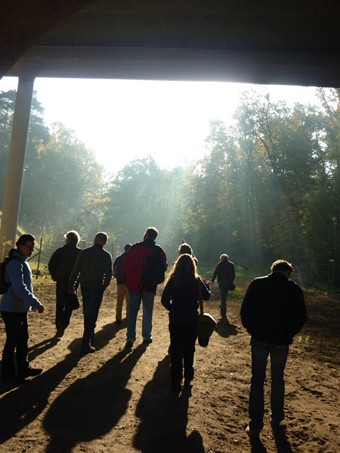
Roads and railways are integral parts of modern living, but they lead to the deaths of many animals and also create barriers to their movement through the landscape. We presented an analysis of brown bear mortality on roads and railways at an international conference on the theme of Safeguarding ecological functions across transport infrastructure, organsied by Infra Eco Network Europe (IENE) in Potsdam, Germany. IENE conferences aim at presenting cutting-edge research, identifying urgent questions and finding effective, cost-effective solutions. The 300 participants from around Europe as well as Australia, China and Brazil had the chance to go on practical field excursions to see 'green bridges' and other initiatives to help wildlife safely cross transport routes. These included a Biotope Network project with the ambitious goal of creating a national network of 20,000 km of 'green corridors' for wildcats and other woodland species, and the South Brandenburg Ecological Corridor, part of which is formed by the Jüterbog wilderness: a former East German military training area where a family of wolves has recently settled just 1.5 hours' drive from Berlin. One of the goals of the German government's national strategy on biological diversity is to transform 2% of the country into wilderness areas by 2020.
White Wilderness 2013 bookings now open
4 October 2012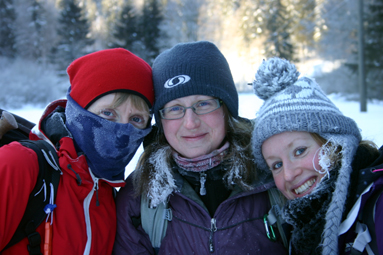
Would you like to help track wolves and lynx in the Tatra Mountains this winter? Sign up for White Wilderness 2013: Carpathian Wolf Watch and you could do just that! The project brings together international volunteers and local people, nature conservationists, foresters, landowners and hunters. Under the close supervision of experienced project staff, volunteers track wolves and lynx and collect samples for DNA analysis, which will allow us to determine the minimum number of animals in the area as well as to detect changes which could require urgent intervention. More >>
Who's afraid of the big bad wolf?
30 September 2012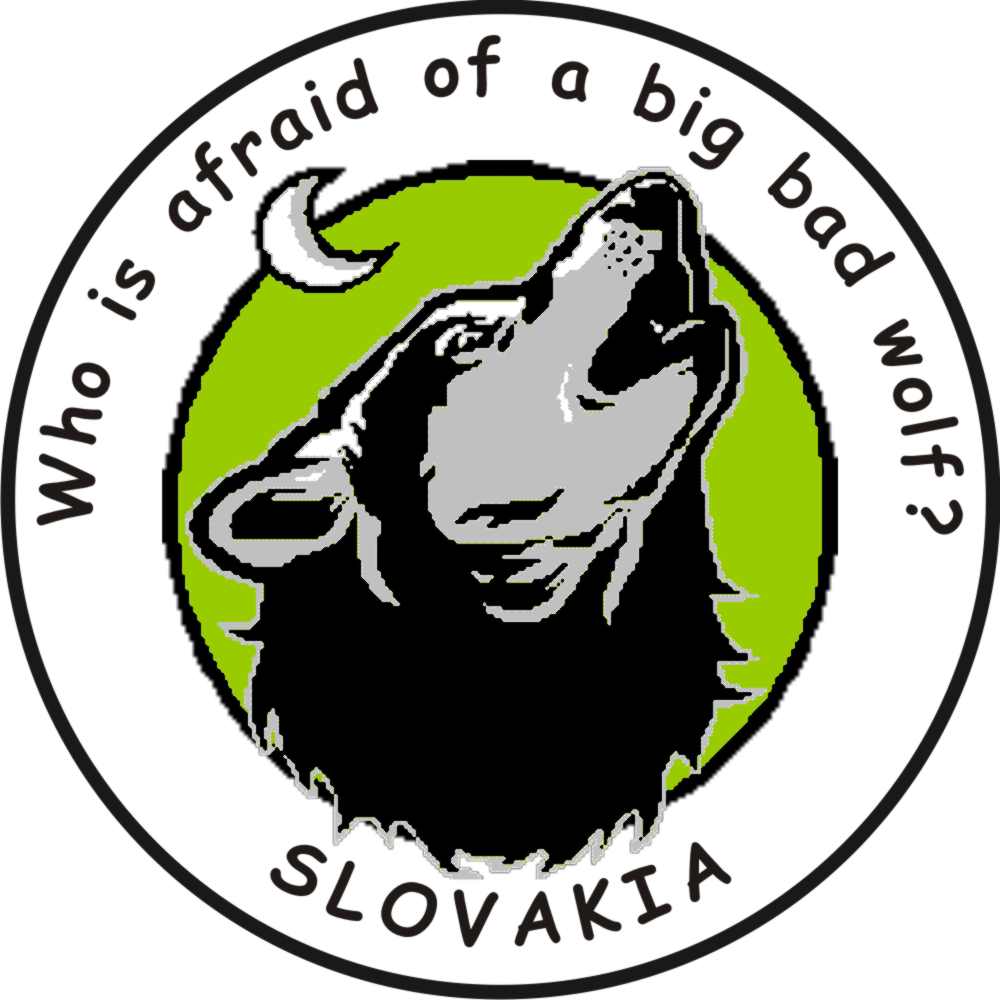
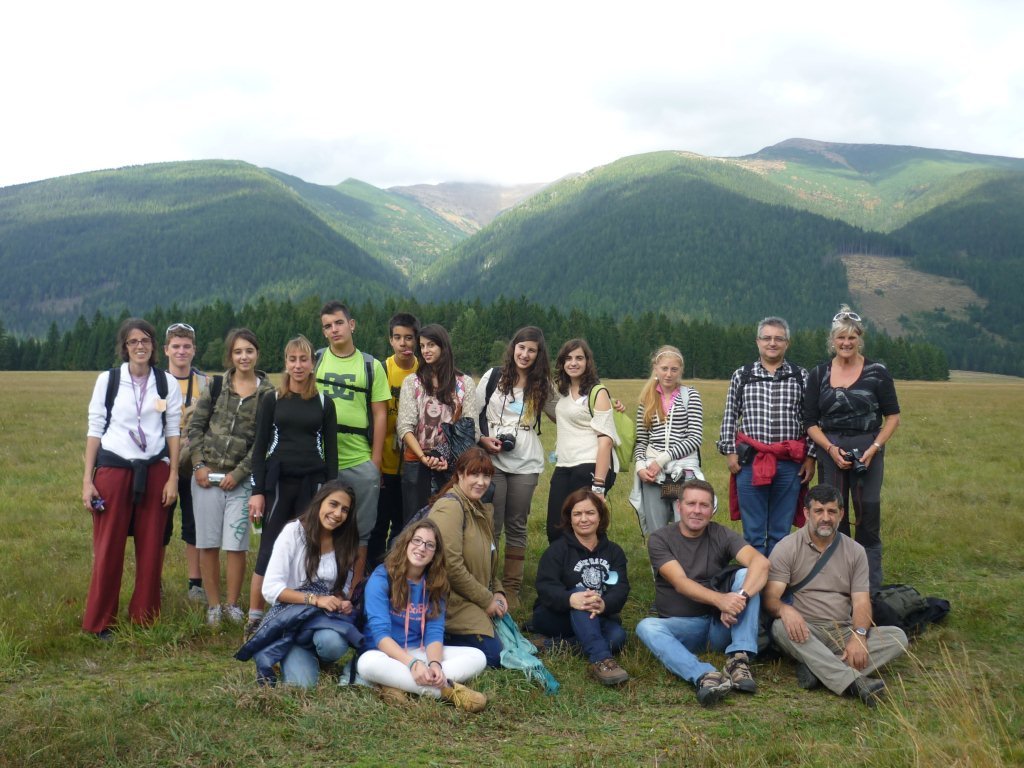
At the end of the month we had the chance to meet students and teachers from 10 different countries, who asked us for help within their interesting Comenius project, "Who is afraid of a big bad wolf?" Our role was to show them signs of the hidden lives of animals in nature. Our guides Jakub, Jörn and Svetlana were able to show off their new skills and knowledge. It was great to see how the students admired the tracks of bears in mud, from which we made plaster casts.
Tracking course
24 September 2012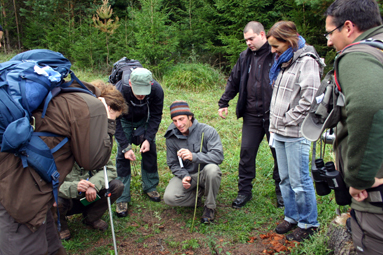
David Moskowitz, well-known tracker from the USA, came to Slovakia in order to teach a 2-day course on 22-23 September 2012 focused on showing how to find the most cryptic signs of animal activity. Participants learned how to correctly interpret wildlife tracks as well as how to go about monitoring systematically. David is a member of the Cybertracker network, which arose from the philosophy and experience of native trackers and organises training courses throughout the world, in which emphasis is placed on individual ability and development of the skills of every particpant. More >>
Bear management workshop
21-22 June 2012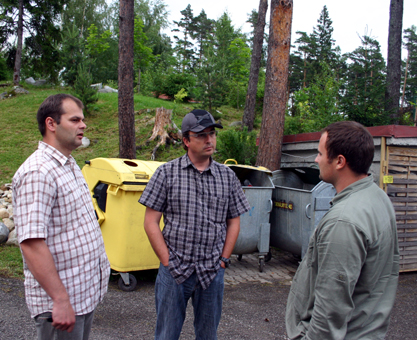
We have held the latest in a series of bear management workshops facilitated by Dr. Alistair Bath of Memorial University, Newfoundland, and the Large Carnivore Initiative for Europe. The goal is to achieve complete consensus on a national brown bear management plan. The bear working group for these workshops includes representatives from a wide range of interest groups and has identified the following topics to address: education, problem bears, compensation, damage prevention, scientific monitoring, legislation, population size, distribution and lethal control. This latest workshop also included an evening visit to several sites in the High Tatras where bears have been getting into rubbish bins. Five years ago we successfully tested a prototype bear-proof bin in the High Tatras and demonstrated other methods of securing refuse from bears and other animals, but it continues to be an uphill struggle to persuade the authorities to adopt such measures, even with the offer of financial and pratical assistance.
Chamois prospering in the Low Tatras
17-27 June 2012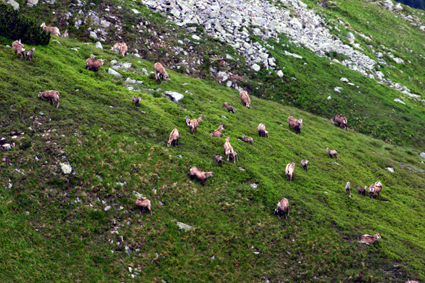
This June we had mostly very pleasant weather for our annual survey of Tatra chamois in the Low Tatras National Park. Volunteers from The Conservation Volunteers (formerly known as BTCV) as well as SWS members and volunteers saw chamois a total of 127 times and observed them for more than 1,680 minutes. On average, there were around 5 chamois per group. The largest herd had 41 animals including 18 kids. Kids seemed to be particularly prevalent this year, accounting for 29% of all observations.
First results of wolf DNA analysis
2 May 2012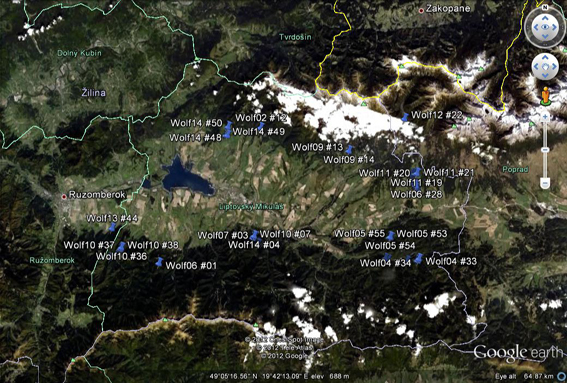
Dr. Ralph Kuehn's Molecular Zoology research group at the Technical University of Munich have analysed the first batch of samples collected during our project White Wilderness: Carpathian Wolf Watch. Out of 55 samples of urine, faeces and hair, only 7 failed to produce a usable result. In other words, at least 87% of what we thought were samples from wolves actually were, so we are clearly doing a pretty good job in terms of identification, collection and storage. The 48 samples confirmed as originating from wolves came from 15 different individuals, which means we can say with certainty that there were at least 15 different wolves using the c.2,000 km2 study area while we were conducting fieldwork. Up to 8 samples came from the same wolf, giving us an opportunity to map some of their movements. Wolf no.6, for example, was identified in Nízke Tatry National Park near Liptovské Kľačany on 2 February, but a week later was 35 kilometres away, outside the Park. More >>
Bears active during severe winter
February 2012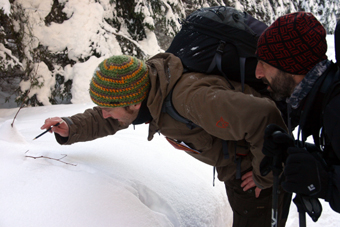
During 3 weeks of fieldwork for White Wilderness 2012: Carpathian Wolf Watch, our volunteer crew covered a total of around 450 km of transects (survey routes) at an average of about 10 km per group per day, which was a great effort considering that we had to cope with temperatures as low as -25°C and up to two metres of snow! About one third of the transects had signs of wolves and one quarter had signs of lynx. We were also surprised to come across fresh tracks of bears in Veľká Fatra and Nízke Tatry. Staff of Veľká Fatra National Park told us they had found tracks of several different individuals that had visited feeding stations prepared by hunters for ungulates. Two bears were also reported to be active in less frequented areas of Slovenský Paradise National Park, possibly due to the unusually long and warm autumn. I also got a phone call from one of our beekeepers to say that a bear had approached - but did not breach - the electric fence we helped him set up around his apriary in Horehronie. More >>
Eurasian Lynx Reintroduction Symposium
November 2011
We were kindly invited by James Thomson to attend - and speak at - a Symposium examining proposals for the reintroduction of the Eurasian lynx into Scotland. The event, held at Edinburgh University on 3 November 2011, brought together a range of stakeholders (landowners, gamekeepers, ecologists, government) to examine different perspectives on a possible reintroduction. Participants examined a range of issues and points of discussion, including the feasibility and desirability of returning native but eradicated species to Scotland, the lynx as a Scottish tourism icon and the anticipated role of technology in hosting a reintroduction trial.
Bear Emergency Team training
10-13 October 2011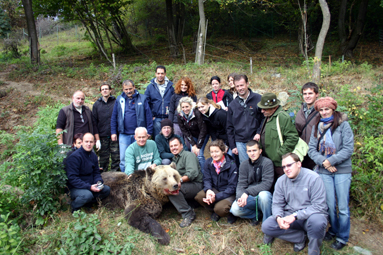
Following a second workshop facilitated by prof. Alistair Bath and working with diverse interest groups to elaborate a brown bear management plan, Dr. Djuro Huber from the Faculty of Veterinary Medicine, University of Zagreb, led a training event on "Implementation and work of an emergency team for solving urgent conflicts between bears and humans". Establishing such a team would be an important step to improving bear management in Slovakia. The first day consisted of a theoretical session including presentation of the Croatian Bear Emergency Team's work and practical demonstrations of some of the techniques that can be used to deter bears, such as pepper spray, rubber bullets and firecrackers, followed by discussion of the main issues to be addressed in Slovakia and drafting of a protocol for a Slovak Bear Emergency Team. For the second day, participants moved to Košice Zoo, where Dr. Huber and Dr. Molnár from the University of Veterinary Medicine and Pharmacy (UVM) demonstrated standardised procedures for immobilising and handling bears.
Calling all snow trackers!
16 Sepember 2011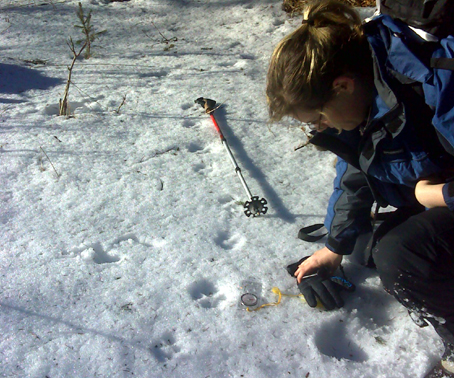
Would you like to help track wolves and lynx in the Tatra Mountains this winter? Sign up for White Wilderness 2012: Carpathian Wolf Watch and you could do just that! The project brings together international volunteers and local people, nature conservationists, foresters, landowners and hunters. Under the close supervision of experienced project staff, volunteers track wolves and lynx and collect samples for DNA analysis, which will allow us to determine the minimum number of animals in the area as well as to detect changes which could require urgent intervention. More>>
New initiative to improve brown bear management
1-2 July 2011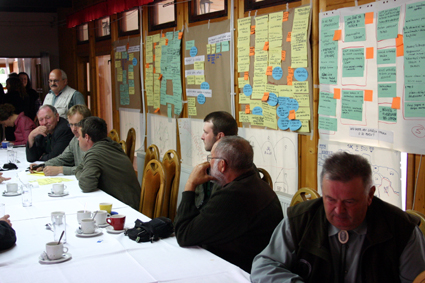
We are delighted to announce the launch of an innovative new project: "Providing the Tools to Improve Brown Bear Management in Slovakia". Working with the Ministry of the Environment and other partners together with internationally recognised experts and funding from Alertis, we will be providing training on best practice in managing bears, covering practical animal handling as well as legislative aspects. The first step is to overcome disagreements between diverse interest groups, and we set about this immediately with a facilitated workshop to improve understanding of the key issues facing brown bears and their management in Slovakia. The ultimate goal is to help all interest groups work together to prepare a national brown bear management plan that everyone can accept. The first workshop was attended by 39 participants, including hunters, foresters, landowners, beekeepers, community leaders, damage inspectors, state nature conservation staff, environmentalists, the police force and university researchers. Despite their contrasting backgrounds and views, the group agreed on a common vision to work towards: "A viable population of bears living in a natural environment with a minimum of conflicts with people". More>>
Chamois survey in the Low Tatras
19-29 June 2011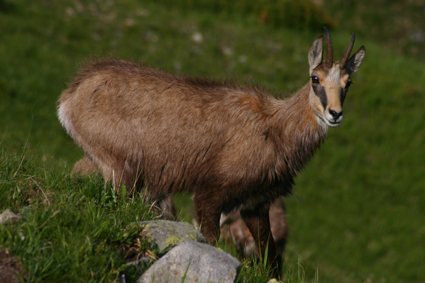
The Tatra chamois (Rupicapra rupicapra tatrica) is a sub-species unique to the Tatra Mountains of Slovakia and neighbouring Poland. Their numbers declined dramatically in the 1980-90s and, in the absence of a definitive explanation, many hunters called for predators to be culled. Concerned that drastic action might be taken without justification, the Slovak Wildlife Society together with the British Trust for Conservation Volunteers (BTCV) and national park staff coonducted an annual census of the chamois in the Low Tatras National Park in 2001-2005, during which we also analysed the diets of some potential predators in the area. We found no evidence that predation pressure was threatening the population, with numbers having stabilised at around 100 individuals. Nevertheless, because there are so few animals, it is vitally important to have reliable information on trend (whether the population is growing, declining or stable). Therefore we plan to repeat the 5-year monitoring programme in 2011-2015. The alpine areas of the Low Tatras is a beautiful area to work in and the mix of Slovak and foreign volunteers assisting us have seen a great deal of wildlife, including wolves and bears.
New exhibition: "The Wolf and his Descendents"
April 2011
The mascot of the Ice Hockey World Chamionships, which will be held from 29 April to 15 May 2011 in Bratislava and Košice, is Goooly the wolf. The East Slovakia Museum in Košice - KSK Cultural Institute and SWS – Slovak Wildlife Society are therefore organising an exhibition entitled "The Wolf and his Descendents", through which we would like to present the wolf as an animal and a natural predator as well as a creature of fairy tales, a symbol od mythology, to the general public at home and abroad and connect the mascot of the 2011 Ice Hockey World Championships with wolf Goooly. More>>
Management plans for large carnivores in Poland
12-13 April 2011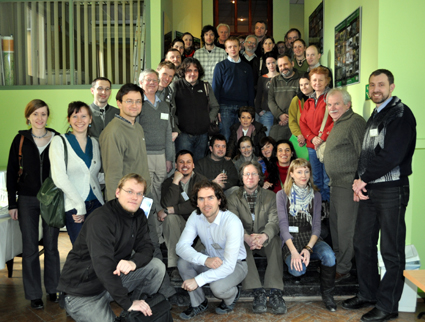
We were invited To Krakow to present the situation of wolves and lynx in Slovakia at an international workshop devoted to preparation of management strategies for populations of Eurasian lynx and other large carnivores in Poland. The workshops formed part of the project "Preparation of management plans of selected endangered and conflict species in Poland", funded mostly by the European Union and hosted by Warsaw University of Life Sciences. A similar workshop on the brown bear, at which we also participated, was held in February. Slovakia also needs to prepare such plans, and participants at the workshops were aware that, because the two countries share the same populations of wildlife, there should be coordination and cooperation between researchers and managers in Poland and Slovakia.
Change is in the air?
March 2011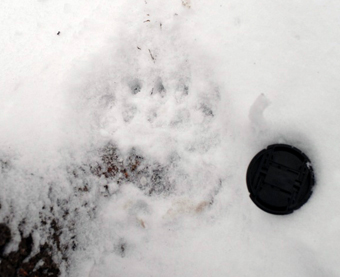
Not only is spring approaching and we are receiving reports of bears active in several localities but there are signs that 2011 could be a year of major change in bear management in Slovakia. We welcome the recent announcement by the Environment Minister, József Nagy, of a range of measures to reduce human-bear conflicts. These include support for the installation of bear-proof bins, an information campaign to inform the public and new procedures for dealing with problem bears. We have been active in all these areas since we launched The BEARS Project in 2003 and have repeatedly called on the Slovak authorities to implement measures that have proven to be effective. On 1 March we had the opportunity to present our work to the Environment Ministry and are cautiously optimistic that the changes planned could bring a positive benefit to both people and bears if they are properly implemented. Click here to see the Environment Ministry announcement.
Monitoring wolves, lynx and their prey
February 2011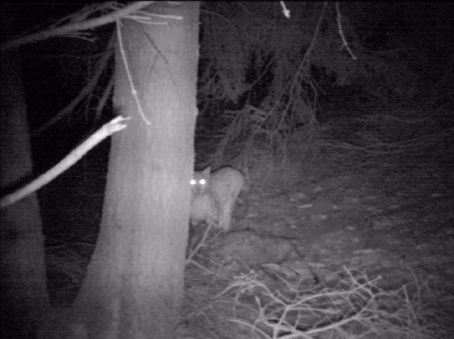
A second field season using systematic methods to assess wolf and lynx population status in the Liptov region of northern Slovakia has been successfully completed. Among the many highlights was video footage of a lynx returning to the carcass of a roe deer which we obtained with the aid of our aic camera traps. These devices open a window on the activities of otherwise elusive species, providing fascinating insights into the secret lives of predators and prey while causing minimal disturbance. We also have a wealth of data and samples to keep us busy analysing over the next few months. A big thank you to all the volunteers and everyone else involved. More>>
White Wilderness 2011
January 2011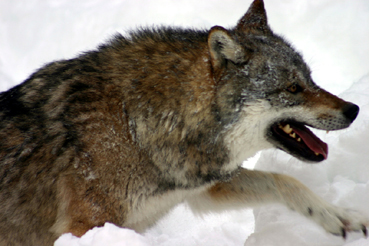
Following last year's successful launch of "White Wilderness: Winter wolf and lynx tracking in the Tatra Mountains", which was featured among National Geographic Adventure Magazine's "25 Best New Trips for 2010", we are continuing this vital work in 2011. The project brings together international volunteers and local people, nature conservationists, foresters, landowners and hunters. Under the close supervision of experienced project staff, volunteers track wolves and lynx and collect samples for DNA analysis, which will allow us to determine the minimum number of animals in the area as well as to detect changes which could require urgent intervention. More>>
UK launch of the White Dog Fund
October 2010
The White Dog Fund was officially launched on 17 October 2010 as part of International Wolf Awareness week at the UK Wolf Conservation Trust, with Wolves and Humans director Richard Morley and Slovak Wildlife Society biologist Robin Rigg giving talks and practical demonstrations of livestock protection methods to invited guests, journalists, volunteers and members of the public. The White Dog Fund aims to provide people in rural areas of Europe who bear the real cost of co-existing with wolves, bears and lynx with prompt and practical assistance to resolve conflicts; a positive alternative to killing them. The Fund gives everyone, whether you live in a city or in the countryside, the opportunity to share responsibility for the conservation of these species by supporting the people most affected by their presence. Thank you to everyone who helped out at the event, and to the UK Wolf Conservation Trust for inviting us. More >>
Volunteer opportunities for 2011
August 2010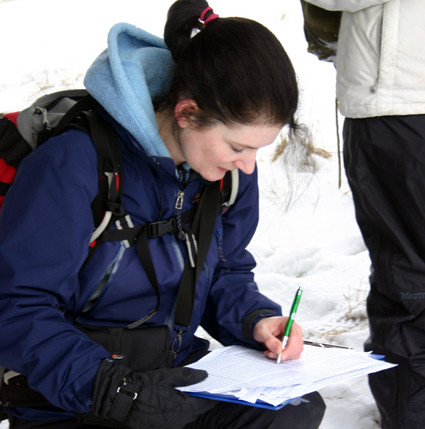
Details are currently being finalised for two exciting volunteer opportunities for 2011. The first year of our snow tracking project, "White Wilderness: Winter wolf and lynx tracking in the Tatra Mountains", was featured among National Geographic Adventure Magazine's "25 Best New Trips in the World". Next year we will be continuing with this ground-breaking project bringing together international volunteers and local people, nature conservationists and hunters, in order to determine reliable estimates of keystone predators in Slovakia. Later in the year we also plan to renew our collaboration with the British Trust for Conservation Volunteers to monitor the status of the critically endangered Tatra chamois. More >>
Lynx filmed hunting marmots
July 2010
We've just had a fantastic experience. Although Tony and Louise were most interested in bears, I don't think they minded seeing a lynx! We had been up since 5am but by 7 had only seen a roe deer buck. He was very nice and came close to us as we sat quietly in the grass, still I thought we could do better so suggested we walk back towards a colony of marmots, which started going berserk as we approached. I've never heard marmots get that worked up about people and didn't think we could be the cause of so much consternation. Sure enough, there was a lynx walking sedately through the middle of the colony. It was the best sighting of one I've ever had: in good light, out in the open about 300-400 metres away from us. We watched it for almost half an hour, during which time it made several attempts to catch marmots, who were having none of it, and eventually disappeared into some dwarf pine (Pinus mugo). And all that before we'd even had breakfast!
UK Reintroductions Study Tour
June 2010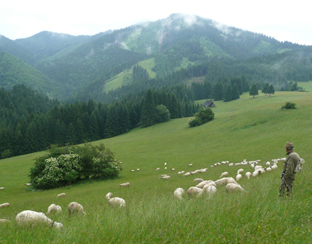
We ran our second Reintroductions Study Tour for those interested in exploring some of the issues that would face any potential reintroduction of large predators such as lynx or wolves to the UK. Participants had the chance not only to visit carnivore habitats but also to talk to local sheep farmers and to see some of the measures put in place to protect livestock, including electric fencing and a guarding dog provided by the Slovak Wildlife Society. Despite the continuing wet and windy weather, it was a fun and useful few days, rounded off with a sumptuous meal at the Grand Castle in Liptovský Hrádok. Thank you to Richard Morley for organising the UK side and also to Ivan Spilý for his excellent driving. All funds raised by the trip will go towards our ongoing work, both in the field and with local communities.
Slovak wolves doing well in Greece
May 2010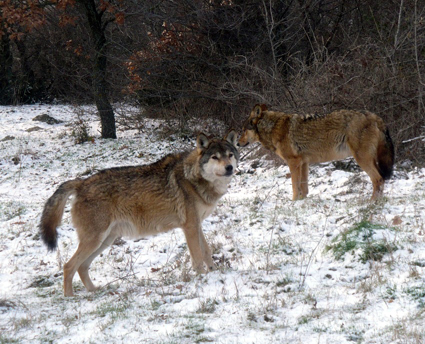
According to Nick Grammenopoulos, manager of the Arcturos Environmental Centre in Greece, Dastin and Dag, two wolves that we helped to rehome in 2006, are doing very well in their new environment. They were successfully transferred to the wolf sanctuary in Agrapidia in the winter of 2009-2010. Dastin was moved first and he was the first to get to know their new territory and to meet their new "roommate" Sirios. He immediately felt at home and is very confident and active within the new enclosure. Dag came some weeks later and at first he was very hesitant and a bit scared to go out of the small enclosure used as an artificial den. But he eventually started to explore the new area and the two brothers now seem very happy. Their enclosure is about one hectare in size and is full of trees, bushes and rocks: quite a diffence from the dog kennel and garden that they lived in for four years in eastern Slovakia. More >>
Bear-human conflicts
April 2010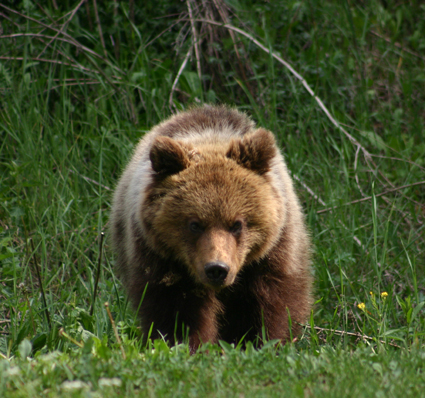
A forest worker was badly injured by a bear in the Tatra Mountains on 27 April. From the little information contained in the brief notification we received from the Environment Ministry, it is not possible to judge why the attack took place, but the letter says that the bear had been seen regularly near the village of Tatranská Javorina for the preceding 10 days. We have received several more letters from the Ministry dealing with other applications to shoot bears. In each case, it is mentioned that the bear had been seen repeatedly in gardens or near buildings. There are several reasons why this might happen. They could be young animals, perhaps in their first spring without their mother, stumbling on what seem to be easy places to get food. There are also several proven techniques to deal with such situations. If done quickly enough, young bears can often be dissuaded with rubber bullets, bear scare darts, Laika dogs and pepper spray. These are standard interventions in some parts of the world but have been largely overlooked in Slovakia. We have written to the Ministry to offer help but have not received any reply.
New exhibition: "Bears and us"
March 2010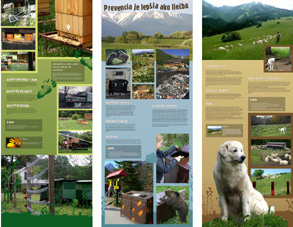
Following the huge success of our previous exhibition "Meeting the Bear", which was seen by around 20,000 people at 50 venues in 2005-2009, we have prepared a new exhibition about Europe's largest land-based carnivore. "BEARS AND US" presents informative facts about bears in an entertaining format. The wealth of photographs is supplemented with a Powerpoint presentation, educational film and plaster casts of bear footprints. A series of attractive banners contain information on what bears eat, why they hibernate and what threats they face. Like its predecessor, an important aim of this exhibition is to explain how problems between bears and people can be reduced, by protecting beehives and crops and learning how to avoid the riskiest situations as well as what to do if you meet a bear. More >>
Tracking wolves and lynx in the Tatra Mountains
March 2010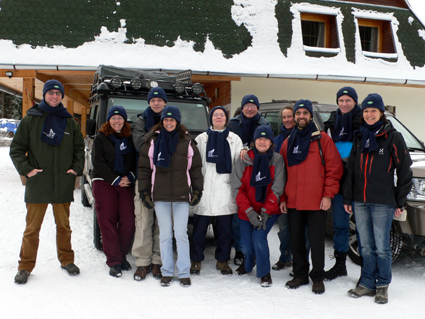
During a three-week period, with the help of foresters, landowners and national park staff as well as Slovak and international volunteers, we covered more than 50 routes of between 10 and 15 km each on foot, snow shoes and skis. All tracks of wolves and lynx were recorded and we also collected samples of urine, faeces and hair for genetic analysis, which will allow us to distinguish between different individuals. It was a relief to get some more snow just in time for our tracking census in Liptov. The task for us over the next few months is to analyse the findings. Thanks to Biosphere Expeditions for recruiting the volunteers and to Land Rover and T.O.P. Auto Slovakia for lending vehicles. The biggest thank you, of course, goes to all the participants (from Slovakia, Hungary, the UK, Ireland, France, Germany, Austria, Belgium, Spain, Australia, Canada and the USA) who were willing to sacrifice their time to help us. More >>
SWS featured in BBC Wildlife Magazine
February 2010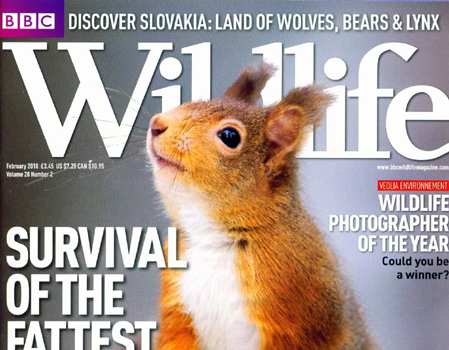
Our Bear Watching guiding service has been featured in BBC Wildlife Magazine. In an article entitled "Eastern promise", photographer and travel writer Paul Glendell describes an exciting encounter he had with a bear under the guidance of Slovak Wildlife Society chairman, Robin Rigg. "A little further on, a loud crack, followed by the rustle of undergrowth, made us stop in our tracks", writes Paul. "Moving carefully, we made our way down through the trees and into a clearing covered in a thick carpet of raspberry plants, a favourite food for bears at this time of year. Here, a trail of trampled foliage led us to another freshly dug out wasps' nest..." You can read the rest of Paul's article in the February 2010 edition of the magazine, which can be ordered from the BBC Wildlife Magazine website.
New wolf and lynx tracking project launched
January 2010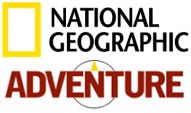
The typically low population densities, large home ranges and cryptic behaviour of large carnivores such as wolves and lynx make them particularly difficult to observe directly and as a result estimates of their numbers vary widely. While environmentalists have claimed that the annual winter hunting season leaves less than 150 wolves in Slovakia, official game statistics list more than 1,500 grey wolves in spring: a huge difference. Who is right? Maybe neither of them. The main aim of our new project, "White Wilderness: winter wolf and lynx tracking in the Tatra Mountains of Slovakia", is therefore to develop a reliable, standardised methodology for assessing numbers of carnivores. We will be using objective, non-invasive methods (those which do not require animals to be captured) to determine the numbers of these predators and to assess if current hunting quotas are set at sustainable levels. Our first field season begins this month and has been included among National Geographic Adventure Magazine's "25 Best New Trips for 2010".
More news: Click here to read The BEARS Project diary

